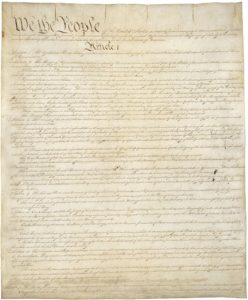Alternative title — False Balance While Dealing with Liars, Exaggerators, and Other Political Miscreants.
There’s considerable consternation in the national press that traditional ‘he said, she said’ political coverage, where each side of a question gets an equal, unchallenged say, doesn’t work when one candidate is an inveterate liar:
A certain etiquette has long governed the relationship between presidential candidates and the elite media. Candidates stretch the truth, but try not to be too blatant about it. Candidates appeal to bigotry, but subtly. In turn, journalists respond with a delicacy of their own. They quote partisans rather than saying things in their own words. They use euphemisms like “polarizing” and “incendiary,” instead of “racist” and “demagogic.”
See, from Peter Beinart, The Death of ‘He Said, She Said’ Journalism @ The Atlantic.
The journalism of equivalance and balance doesn’t work when one candidate is unbalanced and without a contemporary equivalent. The national press is learning this now, although perhaps too late to address effectively the new conditions presented in this election.
Locally, however, we’ve not even had a weak balance, we’ve not had even a sham equivalence.
In Whitewater and towns nearby, it’s one view, sometimes that of a politician, presented as news.
It’s true that the national standards of presumed balance no longer work, and that papers like the New York Times have had to become (as Beinart tells it) more direct in response to lies, exaggerations, and crass political self-promotion.
That’s a cause of national political concern, but at the local level communities have been plagued with lying, glad-handing notables & a sham, lickspittle press for years.
National publications are right to abandon a false equivalence, right to abandon a delicacy of description that only emboldens connivers.
It’s unfortunate, yet true, that these publications now find themselves fighting the kind of fight – without real balance – that’s been ongoing for years in towns across America.

